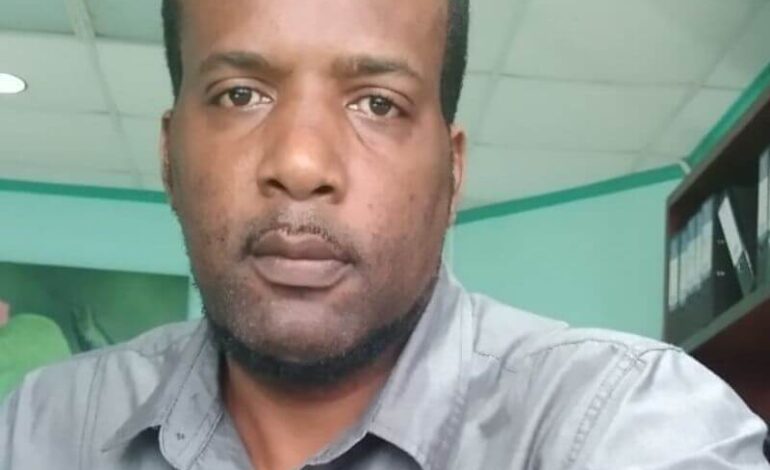
Can Development Corporation Financing Leverage Economic Sustainability in Caribbean SIDS?
Small Island Developing Sates (SIDS) of the Caribbean have a high level of intrinsic vulnerability related to external factors as they tend to be small, remote, exposed to environmental hazards and have a narrow resource base. Their vulnerabilities also increase due to climate variability and limited capacity to adapt yet they are recognized as global hotspots for biological diversity and have immense natural capital for the blue and green growth economies. With a huge ocean to land mass ratio, their marine resources are their largest national assets. Coastal oceans are repositories of diverse marine ecosystems including sea grass beds with very high CO2 absorptive capacity, fish stocks, coral and other biophysical features that drive new opportunities in tourism, untapped genetic material and unique species of flora and fauna- all important ingredients that lay the foundation towards a blue economy shift.
Considerable efforts have been made to advance opportunities in the marine sector of SIDS. For example, the Blue Growth Initiative (BGI)- a shared opportunity and responsible SIDS focused blueprint agenda, is expected to promote ownership of oceanic resources towards sustainable fisheries and other ocean-based industries. In addition, and closer to the grasp of local communities, marine protected area (MPA) management are tools that have been set up to generate economic opportunities for local communities and to broaden understanding of how the coastal and marine spaces can be managed sustainably to responsibly scale up integrated coastal zone management plans as the basis for the blue economy agenda. Despite best efforts, considerable challenges remain across the spectrum and slow progress is denying local communities opportunities to benefit from the coastal and ocean economy. For too long, policy makers have been looking for a new paradigm and solutions to chart a course to sustainable ocean and coastal resource development and unleash the full potential of the blue economy. Limited central government financing, weak institutions and the absence of a coordinating framework are major drawbacks that continue to hinder development in the marine sector of SIDS.
Development corporation (DC) which provides mechanisms for the flow of technical and financial resources from advanced to developing countries is regarded as the single most promising pathway for SIDS to make rapid transition to blue economy readiness in the short term. Official development assistance (ODA) has an important role to play in helping SIDS` develop priorities, capacity, and access to financial resources. While ODA alone will not be sufficient to address the complex needs of SIDS, it can undoubtedly play a catalytic role in building the policy and institutional arrangements that will allow them to take full advantage of the broad variety of development financing options. The big question is how can this be achieved within the context of each SIDS? what instruments are in place to facilitate the work of DC agencies? how might DC effectiveness transcend time and space to benefit grassroot organisations? This article will take a critical look at the obstacles that limit the effectiveness of DC and what needs to be addressed within the context of Caribbean SIDS to make a full transition to blue economy readiness and flow of sustainable financing to local partners.
Financial flows can help SIDS address vulnerabilities and overcome barriers to sustainable development by providing strong leadership to combating climate change, fulfill commitment towards nationally determined contributions (NDCs) and national adaptation plans (NAPs). Increased investment in disaster risk reduction will embolden SIDS to think outside the box and maximize opportunities within and outside the realms of adaptation focused agendas. At present, the active industries common in SIDS such as tourism and fisheries face significant risks due to climate change. Addressing vulnerability, however, poses challenges as limited resources are mostly directed at cushioning or mitigating challenges and in island settings, focus become very narrow in meeting day to day needs. Particularly for marine related development, achieving the twin goal of vulnerability reduction and economic growth and a push for new investments is difficult because of lack of expertise and relatively undeveloped policy instruments. In MPA communities where some development assistance has been focused, it is evident that different strata of priorities exist and tackling them in the right order is crucially important. Addressing vulnerability not only defends past achievements but establishes a link and springboard that spurs new investments. In this context, the key is to bolster resilience and growth through diversification. Diversification decreases existential risks and over reliance, and for marine based industries and investments, reduce risks to manageable levels. SIDS however still lack the human and financial resources to transition into diversified ocean industries. Development Corporation therefore needs to work in tandem with national governments to support the creation of an enabling environment for private sector development, which can further promote the scaling up of new industries. This can be achieved through the facilitation of integration and economic partnerships and providing support for country specific economic diversification initiatives towards the development of the blue sector. In other words, there must be some sort of dynamic equilibrium between the goals of DC and the needs of SIDS.
Caribbean states are at an inflection point where critical decision needs to be made if the blue economy is to takeoff, gain momentum, and together with the green economy, provide a broad base for sustained development and growth. For a very long time, the pursuits of economic development have been lobsided with a narrow focus on the green economy as if to say that both blue and green economic goals cannot be explored simultaneously. We have learnt important lessons along the way in our green economy pursuits- the manifestation of unequal opportunities, marginalization of women and vulnerable groups, capital intensive development which only spur short cycles of unsustained growth, and a shear disdain for the natural environment. By contrast, opportunities and the shape up of the blue economy allows for greater and more equitable growth, inclusivity of local communities, diversified approaches and high sensitivity for the conservation of the marine ecosystems. Important lessons learned from the green economy development must be used to guide blue economy development ensuring both adaptation mechanisms and growth induced factors are pursued in the same go. SIDS’ exclusive economic zones (EEZs) are, on average, more than 2000 times the size of their land masses. As such, ocean-based sectors can form the foundation of many SIDS’ economies and investment in the blue/ocean economy can spur economic diversification. The only doubt is that it has not been attempted before despite growing evidence of plausibility. From untapped reserves of deep seabed minerals, offshore oil and gas, fish stocks, marine algae and micro-organisms, there is significant potential for SIDS to benefit from the expansion of ocean opportunities. Traditionally, we have narrowly looked at our vast ocean resources for artisanal fisheries, small scale beach and dive tourism and maritime transport and have ignored its vast potential for wave energy and mineral resource exploitations and CO2 sequestration and offsets. These opportunities must be explored responsibly in a way that protects the environment and promotes inclusive and sustainable growth, which has been limited in the past. Unfortunately, without the requisite human capacity, this is still beyond the reach of many island nations.
Maritime security guarantees a conducive environment and also plays an important role in protecting and developing the blue economy which by all account is still relatively weak among SIDS. Without adequate maritime security, the continuance of illegal, unreported and unregulated fishing activities, pollution, and unsustainable abstraction of living and nonliving resources, marine ecosystem stability remains worryingly threatened. This is a nagging problem for many Caribbean SIDS becuase they lack proper surveillance systems where the institutional set up and enforcement mechanisms remain weak and undeveloped. This presents a disincentive for development corporation engagements as controls cannot be enforced and results from investments cannot be quaranteed. Achieving a healthy and lasting ocean economy not only requires significant financing but also the right financing that is directed towards the responsible use and governance of the ocean and its resources in sync with the focus on sustainable livelihoods opportunities. Getting the players to toe the responsible line is a daunting challenge which consumes a huge slice of tightly regulated development coporation financing. Development Corporation must therefore re-tailor program objectives continually to address basic needs and explore cost sharing mechanisms that does not always work. Further, ODA must streamline processes for accessing funding and incorporate multidimensional indices to guide allocations. In a constantly changing arena, this is not always a straigth shot. The real desire is that SIDS are empowered to phase out dependency.
Another hindrance to the take-off of the blue economy investment in Caribbean SIDS is that private and public partners continue to function in silos without mechanisms to foster collaborative investments. What‘s worse is the slow pace of developing the policy support, coordinated strategy and a unified vision towards a blue and sustainable economy. Continued progress cannot rely soley on DC aid. There is urgent need to mobilize and effectively explore other diverse resource flows from the private sector. There is need to derisk private investment, remove barriers and unclear and burdensome administrative processes and incentivize private investments. With years of engagement in the region and the hard lessons that have been learned, there is every reason to believe that DC agencies are well placed to foster greater private -public partnership that get the blue economy investments on the roll. Governments too have their part to play in faciliating and attracting private investments by creating the enabling policies and deregulating the investment environment where many more smaller players can enter the sector through incentive based programs. Local authorities on the other end of the spectrum can also help identify projects that fit the local context, develop awareness programs that rally support for private investment and engage private sector stakeholders in development dialogue.
On top of this dilema, is the problem that capacity needs of SIDS continues to be misdiagnosed. In the past, prescriptive development corporation centric approaches have been imposed on SIDS based on the preconceived notion of DC output driven indicator programs devoid of local understanding and context. Prescriptive trainings programs for example, does little to empower locals if their interest and priority lie elsewhere. Context-specific capacity support designed from participatory and consultaive processes is the preferred approach for needs evaluation within island context. Part of this involves providing technical assistance, facilitation of access to training programmes and knowledge exchange. The marine sector and the skills needed to harness and exploit its vast potential remains tangential to mainstream policies. SIDS need a cadre of scientists, engineers, and business minded professionals to spur investments. This must also be supported by technology. For example, digitalisation and the internet are vital for accelerated and sustainable development of the blue economy because of its potential to strengthen inclusivity of development planning and implementation, provide high-quality and timely disaggregated data and ease bureaucratic processes and procedures yet beyond the brovado and loud talk of blue economy growth, not much foot work is evident.
Development corporation agencies must also take a fair share of the blame too in my opinion. Where there is reluctance to fully align to partner country priorities, little gains can be made. Both external and internal factors can contribute to non-alignment. External factors are mostly the case where development partners maintain tighter control over resources in situations presumably when trust issues abound and the perception that partner country lacks the ability to adequately plan and allocate resources. Internal factors are often caused by politics and public perception. Well intended alignment requires strong national development strategies that highlight and prioritize development objectives which serve as a rallying point for development partners. Alignment to partner country development priorities is best coupled with strong country-level coordination. Coordination among partners reduces the fragmentation, diminishes the duplication of efforts and facilitates collective action on priority areas to accelerate achievement of results. Further, good coordination reduces transaction costs for partner country governments and development partners by eliminating parallel systems and processes. A country’s development co-operation architecture must support multi-stakeholder coordination efforts. Such an architecture should encompass a system of laws, policies, oversight bodies, and institutional mechanisms that work together to promote effective DC engagement. Sound management of DC is particularly important in SIDS. Limited government systems can be overloaded by multiple and unconnected channels of development partner support. This barrier continues to be a major obstacle.
Finally, amongst the plethora of underlying issues, it is also important to mention that SIDS lack integrated national financing frameworks (INFF) or if they exist, is too weakly implemented, and this is considered a major barrier to the blue economy investment opportunities. An INFF is a tool to support the mobilisation and management of development resources, setting out how national development plans will be financed and implemented. In the context of the blue economy, it builds on existing national systems and brings together different stakeholders and processes to manage the increasingly complex financing landscape and promote achievement of national development objectives that will jumpstart the blue economy more strategically. The tool adds value in that it strengthens alignment of development finance with national development priorities, it increases overall resource mobilization, and improves government management and coordination within the diverse development finance landscape. The full adoption of INFF creates a very fertile ground and conducive environment that can better shape the blue economy evolution in SIDS. Certainly, the blue economy endeavours need processes and instruments to guide its development along a trajectory of sustainability. There is a real chance to achieve this with the participation and involvement of all players.
A clear-eyed blue economy vision must be unanimous for SIDS. They must reorient their focus towards self-reliance to grow the blue economy prospects from bottom up. On the contrary, and while SIDS are given an extended grace period to make their transition, DC must untie aid by giving SIDS more freedom in deciding how assistance should be allocated. While this may already be happening, much more needs to be done to capitalize on the opportunities of the blue economy which unfortunately is becoming more evasive and harder to harness with unpredictable climate driven stresses and change. A focus on results is vital and remains key. Result-focused approaches are better anchors for development planning, financing, implementation, and monitoring. Its spurs confidence and trust across the engagement spectrum. Country result frameworks must be established to track impact and to better align support to national priorities. And yes, many challenges remain, but so are endless opportunities.
Camille David PhD











1 Comment
I am not entirely against exploits of the blue…. However, if there is an acute sense of responsible exploitation, that could be managed. Those concerned would, of course, take all factors into consideration and it must not be about personal interest which could lead to careless and frivolous conduct of these potential exploits.
A good proposal for sustainability in the small islands. The mining would need due care and diligence.